Malcolm R. Campbell's Blog, page 206
March 28, 2015
Remembering a batch of authors
When we use traditional collective nouns for groups of animals, we speak of a congregation of alligators, a colony of ants, a swarm of bees, a herd of buffalo, a clutter of cats, a murder of crows, a pod of dolphins, a flock of geese, a charm of hummingbirds and a pandemonium of parrots.
 Humorous collective nouns have been suggested for writers, including an absurdity of, an allegory of, a gallery of and scribble of. Some of the funnier suggestions are less than flattering. When I was interviewed for a regional magazine along with other authors from the county, the article was titled “A Truck Load of Authors.” We were all packed into a vintage pickup truck, a picture was taken, and the magazine had a great illustration.
Humorous collective nouns have been suggested for writers, including an absurdity of, an allegory of, a gallery of and scribble of. Some of the funnier suggestions are less than flattering. When I was interviewed for a regional magazine along with other authors from the county, the article was titled “A Truck Load of Authors.” We were all packed into a vintage pickup truck, a picture was taken, and the magazine had a great illustration.
Since I had no viable way of getting all the authors together who have appeared on this blog directly through guests posts and interviews or indirectly through reviews together and posing them on a raft, railcar or a team of wild horses, I’ve settled for the word “batch.”
The Batch at Malcolm’s Round Table
 If this blog has a niche–or a partial niche–it’s books and writers. Since I read a lot, the batch of writers here has included a lot of reviews. Some of those were BIG PUBLISHING BESTSELLERS but most were not.
If this blog has a niche–or a partial niche–it’s books and writers. Since I read a lot, the batch of writers here has included a lot of reviews. Some of those were BIG PUBLISHING BESTSELLERS but most were not.
So yes, I reviewed Dan Brown’s Inferno and talked about Donna Tarrt’s The Goldfinch. I liked The Night Circus, The Tiger’s Wife, and Long Man a lot and you probably heard about those more than once. Of course I talked about my own books but, well, that’s because I can’t help it and I try not to go on and on about them even though I might be going on and on anyway.
But, to move on. . .
However, it was much more fun talking (in reviews or notes) about books by some wonderful authors you weren’t hearing about everywhere else, L. S. Bassen, Seth Mullins and Smoky Zeidel (who has a new edition coming out soon).
Guest Posts and Interviews
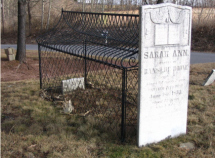
Sara Ann grave in PA. Bob Salerni photo.
When an author has delved deeply into a subject while researching a book, it’s fun to have them to stop by and do a guest post. The most unusual guest post was author Dianne K. Salerni’s (���We Hear the Dead,��� ���The Caged Graves���)��Mortsafes: Protection FROM the Dead or FOR the Dead? Spooky stuff.
Interviews are something special because even though they are conducted via e-mail, my guests and I try to make they read very much like conversations.
Most recently, Marietta Rodgers stopped by to talk about her debut book The Bill. Laura Cowan has been here twice, most recently to talk about her magical Music of Sacred Lakes. Nora Caron, a Canadian author lured into Mexico and the American southwest has written a wonderful trilogy that includes New Dimensions of Being. Melinda Clayton, a psychologist who’s now focusing her observational skills on fictional characters spoke about her novel��Blessed Are the Wholly Broken.�� Two audio book narrators, R. Scott Adams and Kelley Hazen stopped by do tell me how they do what they do. Adams brought his talents as a dialects specialist to my novel Jock Stewart and the Missing Sea of Fire. Hazen brought her experience as an actress to narrate my three-story set Emily’s Stories.
 Diane Salerni’s research into Mortsafes made for a wonderful book in Caged Graves. Novelist Robert Hays used his background as a journalist and journalism educator to write the well-received nonfiction book Patton���s Oracle: Gen. Oscar Koch, as I Knew Him. Laura Cowan (“The Little Seer”) contributed a close-to-my-heart guest post Speculative Supernatural Novels and the Growing Fantasy Genre. Novelist Pat Bertram (“Light Bringer,” “Daughter I Am”) also wrote the nonfiction Grief the Great Yearning which brings together her experiences with loss in an guest post called The Messy Spiral of Grief. Beth Sorensen (“Crush at Thomas Hall”) wrote a sparkling thriller/romance in her novel Divorcing a Dead Man.
Diane Salerni’s research into Mortsafes made for a wonderful book in Caged Graves. Novelist Robert Hays used his background as a journalist and journalism educator to write the well-received nonfiction book Patton���s Oracle: Gen. Oscar Koch, as I Knew Him. Laura Cowan (“The Little Seer”) contributed a close-to-my-heart guest post Speculative Supernatural Novels and the Growing Fantasy Genre. Novelist Pat Bertram (“Light Bringer,” “Daughter I Am”) also wrote the nonfiction Grief the Great Yearning which brings together her experiences with loss in an guest post called The Messy Spiral of Grief. Beth Sorensen (“Crush at Thomas Hall”) wrote a sparkling thriller/romance in her novel Divorcing a Dead Man.
 Helen Osterman worked as a nurse for 45 years. During her training, her rotation she witnessed hydrotherapy, Insulin coma therapy and electroshock. Her background served her well when when she turned to fiction writing in�� Notes in a Mirror. Vila SpiderHawk’s Forest Song novels are magical. She stopped by to talk about Finding Home. I thoroughly enjoyed Deborah J. Ledford’s Staccato, Marsha Forchuk Skrypuch’s Dance of the Banished and Rhett DeVane’s Suicide Supper Club.
Helen Osterman worked as a nurse for 45 years. During her training, her rotation she witnessed hydrotherapy, Insulin coma therapy and electroshock. Her background served her well when when she turned to fiction writing in�� Notes in a Mirror. Vila SpiderHawk’s Forest Song novels are magical. She stopped by to talk about Finding Home. I thoroughly enjoyed Deborah J. Ledford’s Staccato, Marsha Forchuk Skrypuch’s Dance of the Banished and Rhett DeVane’s Suicide Supper Club.
Memory Lane
As you see, memory lane is a long street. It would be even longer if I kept better records, so I’m sure I didn’t find all of my interviews and guest posts. I’m planning to bring you some more new posts in the coming months. I hope you’ll stay tuned and, from time to time, sample the authors’ stories.
–Malcolm
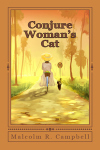 Malcolm R. Campbell is the author of “Conjure Woman’s Cat”
Malcolm R. Campbell is the author of “Conjure Woman’s Cat”

March 25, 2015
Don’t let a bad publisher derail your writing dream
The trouble with dreams is that the defy logic. Last night, I dreamt I was at a Shriners convention. When I woke up, I knew it wasn’t true.
When a fast-talking, dirt bag of a publisher says they’ll give you the moon, the sun and the stars, waking up often takes longer.�� Sure, there can be misunderstandings about contract standards and terms as well as what a new author can reasonably expect. But fraud and almost-fraud are something else.
 If you have a book and think it’s ready to publish, do some Google searches (if you think you’ve found a publisher) and see if anything negative turns up. In fact, do a search on “publishing scams” as well. I did a search on that phrase and got 850,000 hits. That alone suggests there’s enough badness out there to curl your hair even if you don’t want it curled.
If you have a book and think it’s ready to publish, do some Google searches (if you think you’ve found a publisher) and see if anything negative turns up. In fact, do a search on “publishing scams” as well. I did a search on that phrase and got 850,000 hits. That alone suggests there’s enough badness out there to curl your hair even if you don’t want it curled.
If you’re unsure about publishing practices and terminology, check Writers Write. They’re a good resource.
If you think you’ve found a publisher, check Writer Beware. In addition to positive resources, the site features a solid list of publishers and  problems. Or, as they put it: Writer Beware���s mission is to track, expose, and raise awareness of the prevalence of fraud and other questionable activities in and around the publishing industry. They do a good job keeping their data updated. Looking here might save you a lot of time, money and heartache, while keeping your dream of track.
problems. Or, as they put it: Writer Beware���s mission is to track, expose, and raise awareness of the prevalence of fraud and other questionable activities in and around the publishing industry. They do a good job keeping their data updated. Looking here might save you a lot of time, money and heartache, while keeping your dream of track.
Another site with good writing resources is Indies Unlimited. They have a staff of seasoned experts who have been there, done that, and survived to tell the tale–and offer some advice as a bonus.

Click on the graphic for the March 25 post about an author’s experience with an editing company.
But there’s more. IU is currently running a series of blog posts called FOULED! written by people have been scammed. Dream-wise, these are sob stories. In many cases, fraud was involved. Unfortunately, fraud is hard to prove and most beginning writers don’t have the money to hire a lawyer, much less travel to the state where the publisher is headquartered and initiate a court action.
Nightmare on Editing Street
Today’s post by Brenda Perlin tells a nightmare story about the author’s experience with an online editing company. The company promised a beautiful manuscript and delivered, well, pond scum (my term for it).
Such companies can take advantage of a problem most writers face: if the publisher doesn’t hire in-house editors to clean up a manuscript, then the writer has to do it. Unfortunately, the cost for editing, say, a 70,000-word book might well be more than most of us can afford; and, statistically, it also may be more than most debut, small-press or self-published novels are likely to earn. This is a sensitive area for writers because they get dinged by reviewers for typos.
Most of us are the last people to copy edit or proofread out own work.
Previously, on Fouled
If you want to read these in the order that they appeared, start at the bottom of the list and work up.
Getting Out of My Publish America Contract
Do Some Vanity-Published Authors Suffer Stockholm Syndrome?
My Publishing Nightmare with Publish America
Black Rose Writing ��� A Less-Than-Ideal First Experience
Getting Your Book Back
Scam Victims: Know the Law & Know Your Rights

Check the warnings page on this site for prospective red flags.
My Expensive But Not-So-Horrible Vanity Press Experience
iUniverse ��� My ���Assisted��� Self-Publishing Experience
Publishing Process Survey
Getting Your Editor to Edit
My Experience with PublishAmerica
My Bad Experience with PublishAmerica/America Star Books
Bad Publishers: How Can I Protect Myself?
Publishing: Surviving the Scammer Minefield
The Top 10 Ways to Prevent Being Scammed by a Publisher (by someone who did the opposite!)
How To Avoid Publishing Predators
Taking on Scammy Publishers
What To Do When Your Publisher Scams You
This is how dreams are
Writing is hard work. Finding the right publisher and then promoting the book is almost harder work.�� In Blue Highways, one of my favorite books, the author William Least Heat-Moon talks to many people along the road, asking one of them: “Dreams take up a lot of space?”
“All you can give them,” was the reply.
This is how dreams are. How dreams are makes them dangerous because logic and good intentions don’t always mesh well with our journey to make dreams come true. So, as the site says, Writer Beware.
Otherwise, how dreams are is also their magic and wonderment.
–Malcolm
Malcolm R. Campbell is the author of Conjure Woman’s Cat.

March 21, 2015
Wisdom from nature and indigenous cultures
“Malidoma [Dr. Malidoma Some��] teaches that the healing power of nature, ritual and community is what the indigenous world offers to the modern world. In the indigenous world, community is integral to the harmony and balance of each individual.” from the mission statement of East Coast Village
 The modern world of science and technology has learned a lot from observing nature and indigenous cultures’ relationships with the natural world. Unfortunately, we have also missed most of what nature and indigenous cultures have had to offer, and we further facilitated that tragedy by calling such cultures hicks, savages, superstitious, ignorant and pagan (in the negative sense most people assign to that word).
The modern world of science and technology has learned a lot from observing nature and indigenous cultures’ relationships with the natural world. Unfortunately, we have also missed most of what nature and indigenous cultures have had to offer, and we further facilitated that tragedy by calling such cultures hicks, savages, superstitious, ignorant and pagan (in the negative sense most people assign to that word).
Organized religion went a step further, claiming throughout history that pagans–including witches–worshiped the so-called “devil” and needed to be put to death for their beliefs. These beliefs were not only natural but threatened the knowledge and wisdom a culture based on patriarchy had to offer.
Today, for example, we look at prescribed drugs as compounds invented in laboratories and produced in factories. While synthesized drugs have brought quality control and the benefits of mass production, they also come with a price based on a patent that allows drug companies to charge hundreds of dollars for little bottles of pills with ingredients that are probably worth a few pennies.
Yes, it can be dangerous for people without an herbalist certification or an oral tradition of using plants as medcine, much less prescribe them from others. Yet, when the medical establishment condemns the practice out of hand, they are overlooking the fact that many major drugs, past and present, originally came from plants and were frequently discovered by observing what native cultures used for medicine. One expert says that 120 distinct chemicals that come from plants are currently used throughout the world.
In a recent news story (A Doctor Discovered Why Insulin Is So Pricy In America ��� And How To Buy It More Cheaply)�� it was shown that insulin costs diabetes patients more than most of them can afford because a pricey biotech drug created in the 1970s took over the market so completely that the off-patent, generic insulin is no longer available in the United States. The whys and wherefores of medicines and their costs are part of a complex tangle of issues. The lack of natural drugs just might, in some cases, stem from our championing what comes out of a lab over what nature produces.
 In The Spell of the Sensuous, David Abram argues that “Humans, like other animals, are shaped by the places they inhabit, both individually and collectively. Our bodily rhythms, our moods, cycles of creativity and stillness, even our thoughts are readily engaged and influenced by seasonal patterns in the land. Yet our organic attunement to the local earth is thwarted by our ever-increasing intercourse with our own signs. Transfixed by our technologies, we short-circuit the sensorial reciprocity between our breathing bodies and the bodily terrain.”
In The Spell of the Sensuous, David Abram argues that “Humans, like other animals, are shaped by the places they inhabit, both individually and collectively. Our bodily rhythms, our moods, cycles of creativity and stillness, even our thoughts are readily engaged and influenced by seasonal patterns in the land. Yet our organic attunement to the local earth is thwarted by our ever-increasing intercourse with our own signs. Transfixed by our technologies, we short-circuit the sensorial reciprocity between our breathing bodies and the bodily terrain.”
We have been making excuses for years about the supposed Gods of science and technology at the expense of a shared relationship with the natural world and those who understand it. From time to time, we run across articles that focus on one indigenous culture or another that show one group has little or no cancer and another group has little or no stress and stress-related maladies. But such things usually stop at the curiosity-level “go figure” or the profit-motive level of “how can we synthesize what they know put it in a pill?”
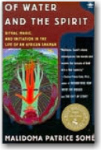 Dr. Malidoma Some��, a widely known teacher of African wisdom, is the author of multiple books, including “The Healing Wisdom of Africa: Finding Life Purpose Through Nature, Ritual, and Community,” “Creating a New Sense of Home” and the now-classic “Of Water and the Spirit: Ritual, Magic and Initiation in the Life of an African Shaman.”
Dr. Malidoma Some��, a widely known teacher of African wisdom, is the author of multiple books, including “The Healing Wisdom of Africa: Finding Life Purpose Through Nature, Ritual, and Community,” “Creating a New Sense of Home” and the now-classic “Of Water and the Spirit: Ritual, Magic and Initiation in the Life of an African Shaman.”
On his website, Dr. Some�� writes that “It is possible that we have been brought together at this time because we have profound truths to teach each other. Toward that end, I offer the wisdom of the African ancestors so that Westerners might find the deep healing they seek.”
I don’t reject art, culture, science or technology. I do reject thinking they are all we have.�� Dr. Some�� has things to teach us that we have turned a deaf and snobbish ear to for generations. Now we have a medical system nobody can pay for, global warming nobody knows how to fix and poverty that exceeds our comprehension. Something is badly out of sync and those who tell us that modern man is like a cancer upon the climate suggest that we ourselves are the problem.
Abram suggests we will never solve the major issues of life as long as we’re only willing to look at everything except nature and natural wisdom whether it comes out of Africa or the so-called “First Nations” (to use the Canadian phrase) who live invisibly among us.
I was taught what most kids of my generation were taught. Christianity is all there is. Paved streets are better than unpaved country roads. Science and technology are better than anything the witches, root doctors, and “illiterate savages” have to offer.
Undoing all that brainwashing can take a lifetime. If only, we could start fresh with our children and not addict them to false gods in the first place.
–Malcolm
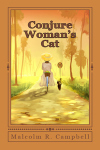 Malcolm R. Campbell is the author of “Conjure Woman’s Cat,” a novella about a granny and a kitty fighting the KKK that’s filled with the wisom of the natural world. It’s on sale today on Kindle.
Malcolm R. Campbell is the author of “Conjure Woman’s Cat,” a novella about a granny and a kitty fighting the KKK that’s filled with the wisom of the natural world. It’s on sale today on Kindle.
“I loved the way Campbell made magic part of the fabric of the place���Readers of magic realism will appreciate Conjure Woman���s Cat. Highly recommended.��� ����� Lynne Cantwell, hearth/myth ��� Rursday Reads

March 18, 2015
Author looks at Congress and a slaughterhouse through satirical lens
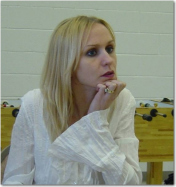
Marietta Rodgers
Today’s guest is Marietta Rodgers, author of The Bill (Second Wind Publishing, January 6, 2015). In the novel, Representative Joe Herkieze is trying to get his Hunger Relief Act passed and teenager Hope Price has taken a summer job in a slaughterhouse looking for enlightenment. This juxtaposition screams dark humor and satire.
Malcolm: Your novel The Bill is a political satire. Did you select this genre because you tend to view the world through a satirical lens or because satire seemed like a fitting approach to a story about a Congressman?
Marietta: ��I do view things through a satirical lens sometimes, but the lens are more like reading glasses, where I wear them as needed as opposed to all the time. Satire is a good tool for highlighting flaws or short-comings, but it is also a way to goad individuals, groups and governments into improvement, by juxtaposing reality with absurdity and not having a giant chasm in between. The misnomer is that satirists are pessimists, or even misanthropes, but usually it is just a way to unlock human potential.
Malcolm: Did you have to do a considerable amount of research to write about the process a Representative follows to write, promote and get a bill passed?
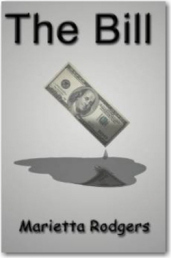 Marietta: I did research the process of a bill from the time of its inception to its fruition, because it isn’t as straightforward as people might think. These bills can get watered down or so bogged down in a committee, that they never see the light of day. ��It’s good that we have checks and balances, but unfortunately what we have currently, is nothing more than obstructionism, that has little or nothing to do with the bill themselves, but more to do with party lines.
Marietta: I did research the process of a bill from the time of its inception to its fruition, because it isn’t as straightforward as people might think. These bills can get watered down or so bogged down in a committee, that they never see the light of day. ��It’s good that we have checks and balances, but unfortunately what we have currently, is nothing more than obstructionism, that has little or nothing to do with the bill themselves, but more to do with party lines.
Malcolm: Obstructionism is bad for the country but good for satirists. Your book also features a slaughterhouse whose foreman is aptly named Piggy. I must confess, I haven’t read anything about a slaughterhouse since I read Upton Sinclair’s muckraking book The Jungle in school. How did you happen to select this industry for your novel, and how did you learn enough about a slaughterhouse to write about it?
Marietta: I did have to do research on slaughterhouse practices, because I too read The Jungle and thought I would be working away from that, but people would be surprised to note that some of the horrifying practices that took place then still occur. John Lennon famously said, “If a slaughterhouse had glass walls, we’d all be vegetarians.” I think that is definitely true.
Malcolm: I understand George Orwell’s “Animal Farm” is among the books that have influenced you. Is it partly responsible for your choosing satire as a genre and possibly for naming a slaughterhouse foreman “Piggy”?
 Marietta: ��I wrote, The Bill as a satire, because it just felt natural. George Orwell could have written,��Animal Farm (I’m sure he would have titled it something else) as a straight forward tale, without the use of satire, or the metaphorical use of animals to convey his dismay over Stalinism, but it would have been a halfhearted jab, as opposed to the knock out punch it delivered instead. It would have definitely lost a lot of bite in the telling. The slaughterhouse foreman’s nickname is Piggy, which was given to him by the other workers. I chose that name for him, because he is the head of an entire slaughterhouse machine, which slaughters not only pigs, but really human dignity as well.
Marietta: ��I wrote, The Bill as a satire, because it just felt natural. George Orwell could have written,��Animal Farm (I’m sure he would have titled it something else) as a straight forward tale, without the use of satire, or the metaphorical use of animals to convey his dismay over Stalinism, but it would have been a halfhearted jab, as opposed to the knock out punch it delivered instead. It would have definitely lost a lot of bite in the telling. The slaughterhouse foreman’s nickname is Piggy, which was given to him by the other workers. I chose that name for him, because he is the head of an entire slaughterhouse machine, which slaughters not only pigs, but really human dignity as well.
Malcolm: Do you have a new satirical novel in the works or have you shifted your focus for your next book?
Marietta: I wrote a novel called, Loony Bin Incorporated, which is a satire of big business. It is tentatively scheduled to be available for sale, June 1, 2015. This was another novel, that I felt was better told as a satire. It employs a lot more lighthearted humor than,��The Bill though.��Currently, I have shifted my focus to writing short stories, that each revolve around the lives of tenants in a particular building in New York City.
Malcolm: What did I forget to ask you?
Marietta: “Vanity Fair” does the Proust Questionnaire, based on the famous questionnaire of the French writer, Marcel Proust. One of the questions they ask authors that I like is, what is your current state of mind? The answer: always a chaotic preoccupation of ideas.
Malcolm: I’ve found that chaos is often a writer’s best friend. Thanks for dropping by the Round Table today to talk about The Bill and the ways and means of satire.
 You can read more about Marietta Rodgers at “Pat Bertram Introduces” and her Second Wind Publishing author’s page. The Bill is available in paperback and e-book.
You can read more about Marietta Rodgers at “Pat Bertram Introduces” and her Second Wind Publishing author’s page. The Bill is available in paperback and e-book.

March 17, 2015
Gateway to Glacier Trail
from Gateway to Glacier Trail:
“Construction of Phase I of our project – from Coram to West Glacier – is slated to begin THIS SUMMER! With the existing path, that means there will be a full ride from Hungry Horse to the entrance of Glacier National Park!”
This trail ought to improve recreational opportunities on the west side of the park.
Malcolm

March 14, 2015
Herbs: Holy Ghost Root
“Angelica Root (also known as Holy Ghost Root, Archangel Root, and Dong Quai) is widely thought to be a powerful Guardian and Healer, and to provide Strength to Women. We believe that Angelica Root is used by many people for the purpose of Warding Off Evil and bringing Good Luck in Health and Family Matters” –��Lucky Mojo Curio Company
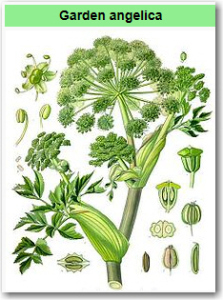 This biennial, Angelica archangelica, is known variously as angelica root, wild celery and holy ghost root. In myth, the Archanel Michael (or Gabriel) said it had medical uses, hence its name.
This biennial, Angelica archangelica, is known variously as angelica root, wild celery and holy ghost root. In myth, the Archanel Michael (or Gabriel) said it had medical uses, hence its name.
Herbs-Treat and Taste says that “because of its association with the archangel it was also believed to be associated with the Annunciation when the Archangel Gabriel appeared to the Virgin Mary and told her that she was pregnant. One legend says that an archangel revealed in someone���s dream that angelica was a cure for the plague. Because of these holy associations it was believed that it would rid places of evil spirits and protect against witchcraft and evil enchantments.”
In folk medicine, it’s used variously to keep a home protected and peaceful, to ensuring that a marriage is a happy one, and to create the “Fiery Wall of Protection” that protects your property and yourself from evil people.
In folk medicine, the roots and leaves had multiple uses from purifying the blood to curing augues and infections as well as fighting coughs and colds. As an aromatic plant, it has also been used in pot pourris, essential oils and as a flavoring (similar to Juniper) in��confectionery, perfumes and liqueurs.
According to WebMD, Angelica is used for heartburn, intestinal gas (flatulence), loss of appetite (anorexia), arthritis, circulation problems, “runny nose” (respiratory catarrh), nervousness, plague, and trouble sleeping (insomnia).
When researching my novels, I find the multiple uses of herbs fascinating because many have come into standard medicine and are now created synthetically, but also have purported magical uses or are old folk medicine remedies. As a writer, I an usually a bit vague in my descriptions of herbs and their uses because (a) I’m not a doctor or herbalist, and (b) Don’t want anyone to think that a fictional usage constitutes a medical prescription or an herbal tea.
Usages vary greatly depending on where you look and the culture you’re looking at.
–Malcolm
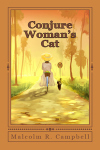 Malcolm R. Campbell is the author of “Conjure Woman’s Cat,” a novella set in the Jim Crow era of the Florida Panhandle about Eulalie and her cat Lena who fight the KKK with spells and other magical means.
Malcolm R. Campbell is the author of “Conjure Woman’s Cat,” a novella set in the Jim Crow era of the Florida Panhandle about Eulalie and her cat Lena who fight the KKK with spells and other magical means.
March 11, 2015
Seminole Pumpkin Fry Bread
One of the first things I learned to cook was fry bread. Didn’t take long to get it right because it has very few ingredients and is one of those foods that (like making biscuits) is done by the feel of the dough rather than slavishly measuring ingredients into a mixing bowl.
If you work the hell out of the dough, you’ll ruin it like you can when making pasta. The dough works better if you make it one day, cover it over night with tin foil (AKA aluminum foil) in the ice box (AKA fridge), and make the bread the following day.
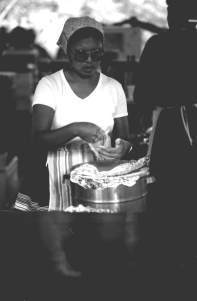
Seminole fry bread preparation at the 1983 Florida Folk Festival – State Archives of Florida, Florida Memory
There are a lot of variations, but pumpkin tops my list, though you can experiment with butternut squash instead of pumpkin. I like it plain, but some folks add cinnamon or nutmeg or vanilla extract (food Lord!) or even dust the tops with powdered sugar like they’re making Beignets in New Orleans (what the hell?).
If you’re using self-rising flour, then flour (about 3 cups), pumpkin (let’s say 4 cups) and sugar (a cup or less) is all it takes. With all-purpose flower, you’ll need a tablespoon of baking soda as well. And some cooking oil or lard. Pumpkins harvest in the fall, so if you have fresh, chop it up and boil it. If not, canned pumpkin works fine. (If you don’t want the pumpkin in it, use water or milk when mixing the flour. If you don’t want it sweet, leave out the sugar.) You can find traditional recipe variations here.
Let it sit over night. Don’t skip this step.
The next day, roll the dough into balls and then flatten them with your fingertips so they’re thin enough to cook all the way through before they burn on the outside. Taste the dough before you do this to see if it needs more sugar or is too sticky and needs more flour. Put the little cakes in a skillet or pan of hot oil (medium high).
Turn them when the edges get brown. Medium brown is what you’re looking for and that usually happens when the cakes float. Drain on a paper towel. Great for snacks or to go with your dinner.
If you like pictures to go with your recipes, the Seminole Tribune has a series of what-it-ought-to-look-like pictures here.
I don’t normally talk about food on this blog, but I mentioned pumpkin fry bread a fair number of times in my 1950s-era folk magic novella Conjure Woman’s Cat and that was enough to get me addicted to it all over again. Seems like everyone in Florida made fry bread in the 1950s.
In many Indian nations, making and eating fry bread is sacred and deeply linked to the past.
–Malcolm

March 8, 2015
Briefly Noted: ‘Sunrise from the Summit’
When I spent a summer at the University of Colorado, I signed up with the mountain recreation department and climbed mountains every week. I always planned to go back and see how many of the state’s 54 14,000-foot peaks I could climb. Never did. Wish I had.
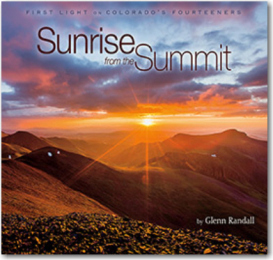 Glenn Randall climbed all of them. Better yet, he took pictures and put them together into a beautiful book. The book groups the photographs by the Front, Sangre de Cristo, Mosquito, Tenmile, Sawatch, Elk and San Juan ranges.
Glenn Randall climbed all of them. Better yet, he took pictures and put them together into a beautiful book. The book groups the photographs by the Front, Sangre de Cristo, Mosquito, Tenmile, Sawatch, Elk and San Juan ranges.
From the Publisher
“Award-winning photographer Glenn Randall dedicated seven years to climbing each of Colorado’s 54 peaks over 14,000 feet with one goal in mind: to capture the glory of sunrise from each summit. His quest required hundreds of hours of planning and preparation, then scaling the peaks in the dark while carrying a pack loaded with camera gear. Randall’s reward and yours is this beautiful collection of unique and dramatic images that will put you on the summit just as the sun gilds the far horizon.”
In his the introduction, Randall writes, “Summits are magical places. Reaching the summit of a high peak gives me the exhilarating, humbling and awe-inspiring experience of being a tiny speck on top of the world. To me, mountaineering is a metaphor for the human condition. It embodies in concrete form the way we reach for the sky, yet can only climb so high.”
I agree. The pictures in this book are beautiful and give a small hint about what it’s like to be standing in the high country experiencing the view.
–Malcolm
Malcolm R. Campbell is the author of “Conjure Woman’s Cat,” a novella about a granny and her cat vs. the KKK in the Florida Panhandle of the 1950s. 99 cents on Sunday, March 8.

March 5, 2015
Shameful: ‘USS Ranger, aircraft carrier once sought as Fairview tourist destination, heading to scrap heap’
“BREMERTON, Wash. — Naval Sea Systems Command says the mothballed aircraft carrier USS Ranger, once sought��as a Columbia River tourist destination��in Fairview, will be towed out of Puget Sound on Thursday on its way to be scrapped in Texas.
“The Ranger was commissioned in 1957 and was active during the Vietnam War and also deployed in support of Operation Desert Storm, the first Persian Gulf War. The carrier was decommissioned in 1993 at the Puget Sound Naval Shipyard.” – The Oregonian
Yes, I know, Naval Sea Systems Command (NSSC) has no reason to expect anyone to save the old treasure now as last-ditch efforts to bring the ship to San Diego as a museum apparently went nowhere.
The ship is in relatively good shape, as pictures showed last fall when the State of Oregon named the Ranger as a Heritage Site. That action had no apparent impact on NSSC or on other cities who could have brought together movers and shakers to secure the ship as a lucrative tourist attraction and educational destination.
I was a member of the USS Ranger Foundation, though from the other side of the country, I never could get enough feedback from them to find out why they were moving so slowly, why they couldn’t work with BNSF to work out the problem of a low railway bridge blocking the ship’s passage to the proposed site in Fairview, Oregon, or why they couldn’t attract the interest of more heavy hitters to get the job done.
I was a museum consultant at the time and offered to help, but never got a response. Sometimes, membership doesn’t have its privileges.
So now the Navy has sold the ship for a penny. Perhaps the Navy can spend that penny on a stick of gum or as a down payment on a sheet of stamps. We are not well served by this action. It is short sighted.
A carrier museum could serve a municipality well, for cultural tourist destinations typically bring in visitors who stay longer and who spend more in the community (hotels, gas stations, restaurants) than the average tourist. Some of the ship’s compartments could be devoted to exhibits, while others could have been used for classes, presentations or even as spaces for rental to groups wanting unique places to meet.
Short of a miracle–(Dear Mr. President: How about an executive action on this project?)–the ship will be turned into scrap metal, thrown out with the trash, so to speak, in a way that benefits nobody and does not preserve our history.
–Malcolm
I served on board the Ranger in 1968 and 1969 in the Gulf of Tonkin and used my experiences as inspiration for my novel “The Sailor.”

March 4, 2015
Hope – the candle within otherwise dark tales
“At the heart���s core of fantasy literature lies the infinite possibility of dreams. Whether it presents alternate worlds in outer or inner space, alternate forms of life beyond humanity, alternate realities beyond our own, this genre speaks not to the limited self but to the limitless spirit. The well from which it draws its inspiration – be it established myth or the capacity for myth-making – is that which Joseph Campbell calls ���the lost forgotten living waters of the inexhaustible source.���”
– O. R. Melling
Bad things happen to good people every day. We cannot deny this. Good things happen, too, but when they happen too often in fiction, the author is likely to be criticized for his or her story’s Hollywood ending.
One of the reasons I read and write fantasy literature is, as Melling says, the hint that no matter how dark the tale, dreams contain infinite possibilities.
I don’t think this means fantasy is escapist fiction or that it helps people deny reality. I’d rather say that it helps readers nurture the innate glimmer of hope that burns (or, perhaps, hides) within every human heart.
When we read about real-life heroes in the news, their heroism not only says something about their values but about the fact that they defied an apparently hopeless reality and changed it. News stories about animals being saved from icy ponds and raging rivers, about platoons that make it back to headquarters from a hellish battle, and first responders who rescue people from burning buildings tend to catch our attention and turn into the things we share with friends on Facebook or around the dinner table.
Life is, I think, fueled by hope, and so it is that stories in the newspaper and the TV evening news about hope fulfilled resonate with us. This is the key to fantasy literature that people read and re-read and talk about.
Perhaps we think, “If the real person in the news item or the protagonist in the story can conquer an obstacle, so can I.”
As authors, our primary role is telling a good story, not making people feel good about themselves and their future. But for those of us who agree with Melling that “as long as the spirit is intact, nothing is broken irreparably,” writing fantasy is a natural outgrowth of the way we see the world.
When he “get the story right,” our readers feel that way, too, by the time they get to the end of the book.








